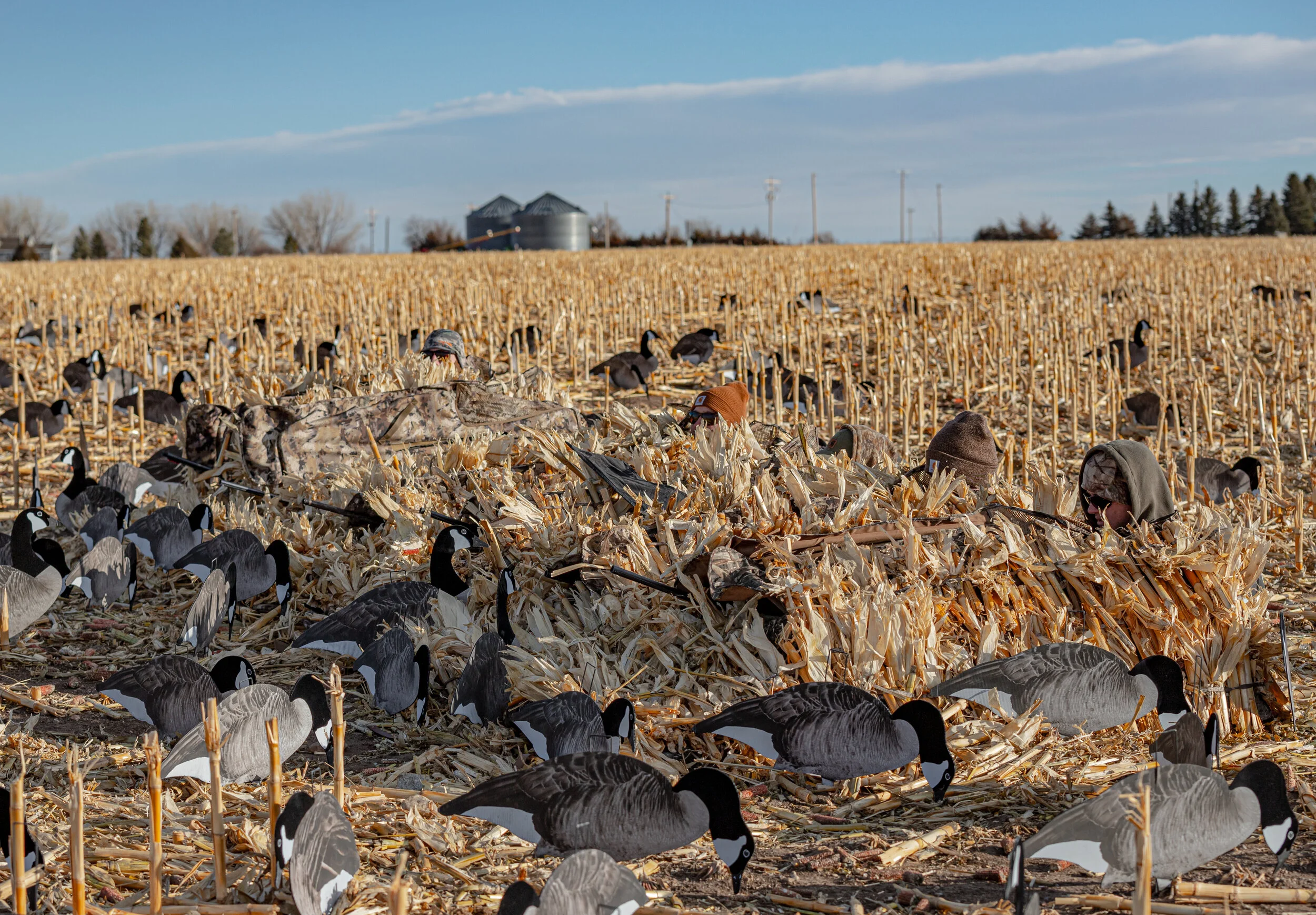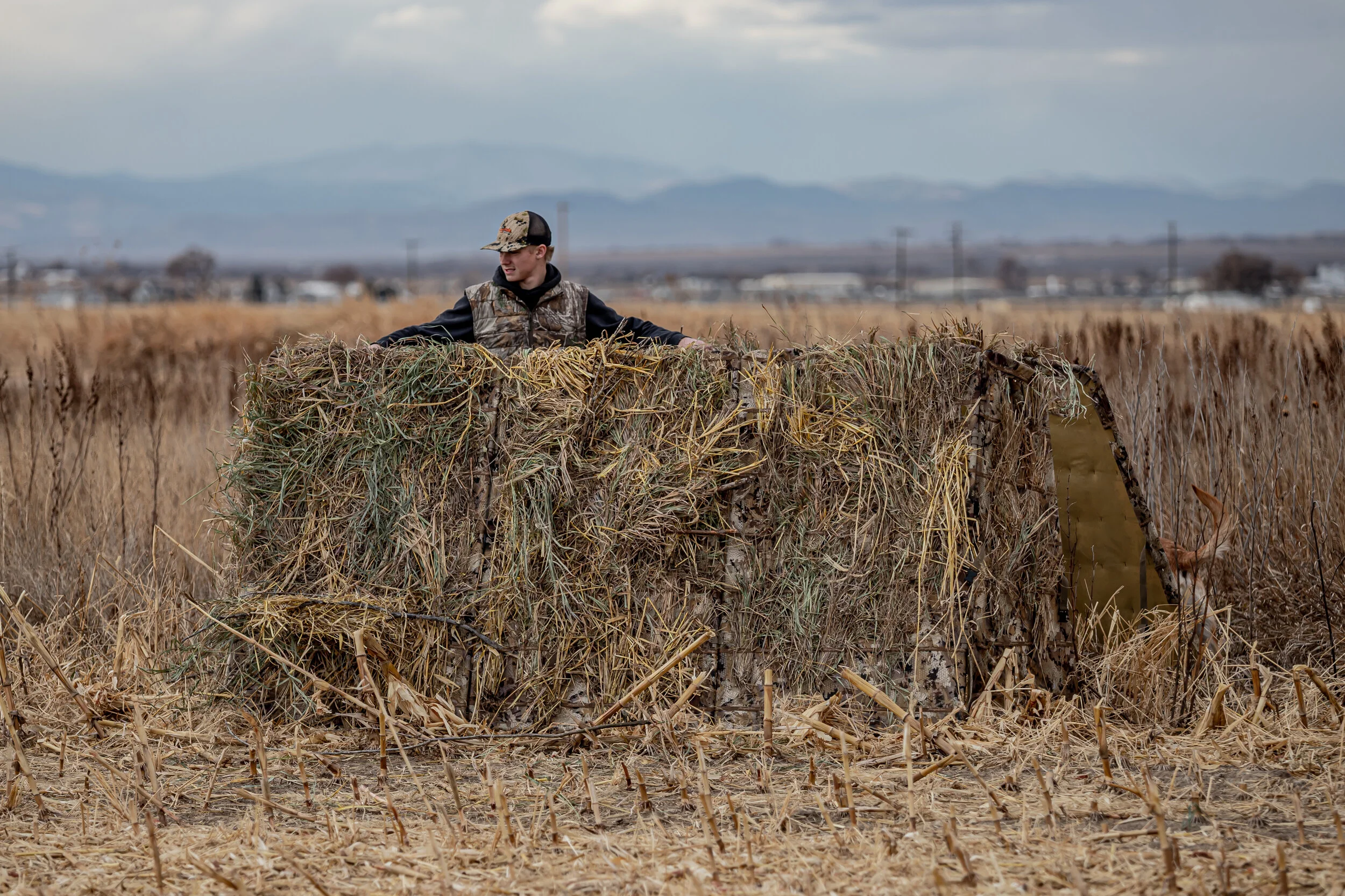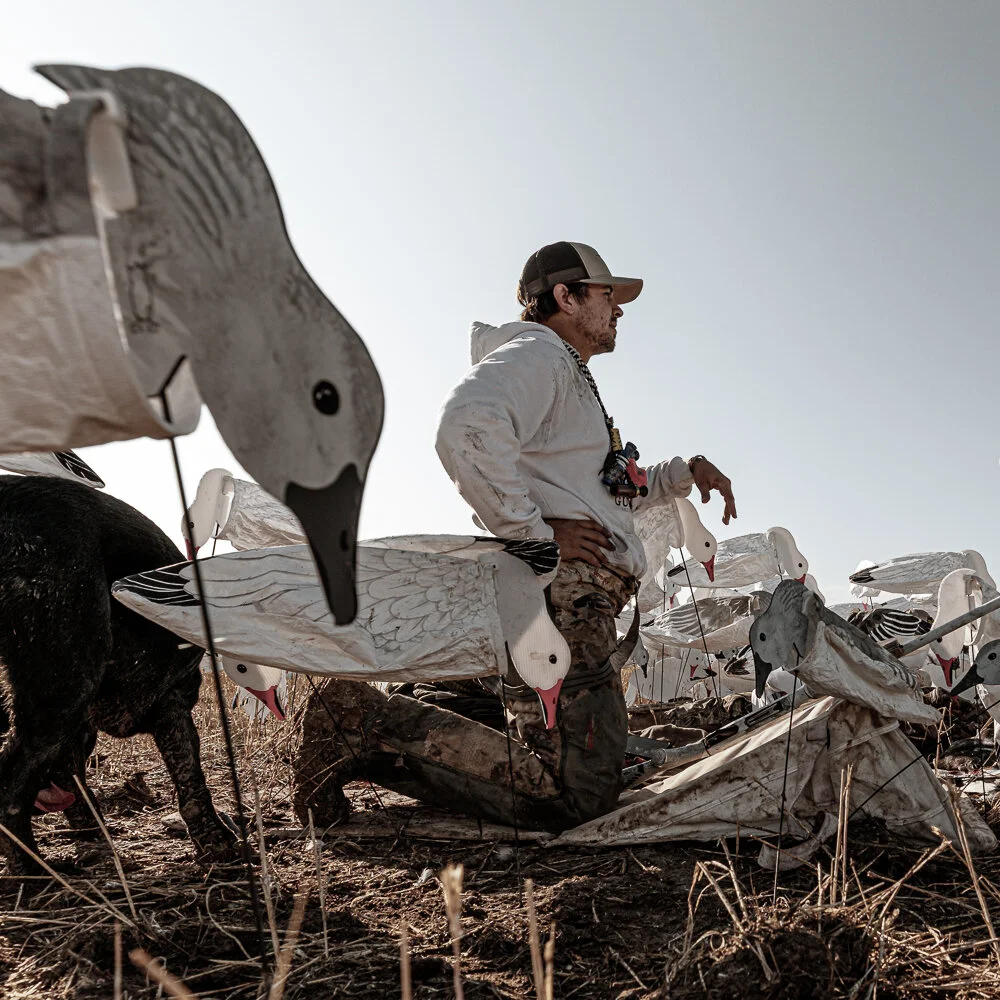Layouts Vs. A-Frames
Parker Knox for SPLIT REED
Waterfowl blinds have come a long way over the years. They are more portable and versatile than ever, and although it can be a fun way to pass the time, you don’t have to spend all summer digging pits or building permanent blinds if you don’t want to. A waterfowler can throw down a few bucks on a couple of different blinds to be prepared for any situation. But how do you choose a certain blind for such situations? Below we discuss the similarities and differences between the two most popular types of waterfowl blinds – layout blinds and A-frames – and some history behind them both.
A lot of hunters will remember the introduction of layout blinds. They were game-changers! I remember purchasing my first layout blind – an Avery Power Hunter. These new tools gave us the ability to hunt in locations that were previously impossible to hide. The low profile allowed a hide in short cover, in the middle of a field, in the decoys. What an experience it was to have birds try to land on the blind itself. After all, we were mimicking a pile of silage or trying to disappear in the contours of the field. Another advantage of layout blinds is that they’re easy to transport. They don’t take up much room in a truck bed or trailer, and they are light enough to haul out into a field if need be.
But layout blinds recently gave way to the a-frame style blind. Why is that? Many will say that the birds became conditioned to a decoy spread in the middle of a field with multiple hunters hiding in layouts. Although I tend to agree with this sentiment, there are other factors to consider. Some hunters got tired of laying on the cold ground, getting pelted in the face with whatever precipitation may be falling. And the biggest complaint I’ve heard was some getting tired of, or not being able to sit up to shoot. While most of us are willing to do whatever it takes for a successful hunt; careful consideration might need to be taken for inexperienced family, friends, or from a guide’s perspective. Enter the A-frame.
Just as silhouette decoys have made a comeback, the A-frame blinds we know today are simply the product of modern technology coupled with age-old tactics. Hunters have built these types of blinds for decades and used them religiously. However, today’s A-frames can be moved with relative ease, and grassed with whatever local vegetation is appropriate for the given situation. Hunters moved from the middle of fields to fence lines, hedgerows, and drainage sloughs where the cover was tall and abundant enough to accommodate a larger blind. The A-frame also allows easier shooting and all of the hunting and camera gear to be stowed inside the blind, out of sight to incoming flocks. This looked to be the go-to method for a few years, but once again things seemed to have changed.
In today’s times, it’s a toss-up. Most dedicated waterfowlers have both types of blinds and use them throughout the season. We’re wearing Tyvek suits in white spreads, covering up with ghillie blankets in crop fields, and doing anything we can to hide from ducks and geese. We’re lining up A-frames 3-deep in the middle of bean fields, and using layout blinds on the edges – the opposite of what logic tells us. So is there one single method that works best? The short answer is: No. But it does make the seasoned guys think a little bit, and hopefully gives some perspective to the newcomers.





